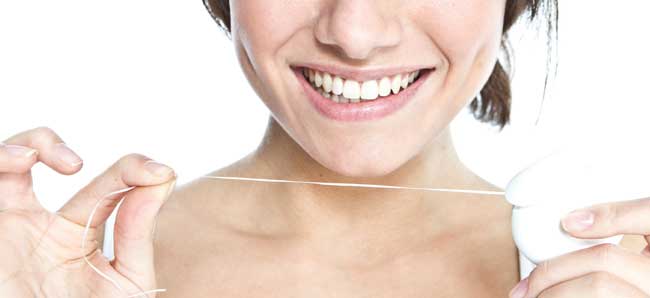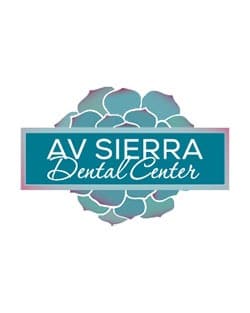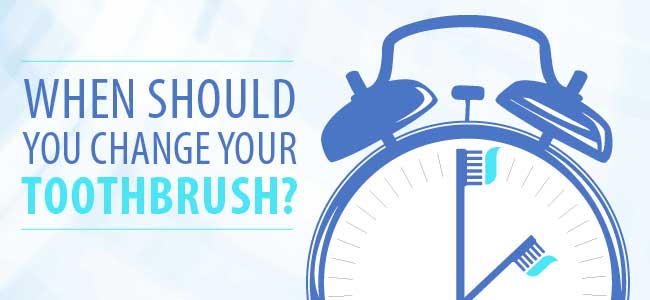The Gift of Giving

As the holiday season continues in full effect, a lot of people get in the mood for giving. With Thanksgiving just over, you probably ate so much that you envy cows and their four stomachs. But before you delve into eggnog, cookies, prime rib, and fruitcake (Well, we aren’t sure anyone has eaten fruitcake in the last two decades, but it’s synonymous with the holidays, so…), you should consider donating to a charity. With so many charities to choose from, it can be hard to make a decision on what cause you want to be apart of. Below are a few charities that focus on dental needs. National Children’s Oral Health Foundation (NCOHF) – Through various programs and initiatives, NCOHF aims to helps children of all ages by educating them on preventative oral care, as well as providing oral health products to those in need. Since the NCOHF gets funding from bigger partnerships, all donations made go directly to the programs and not administrative or fundraising efforts. Dental Lifeline Network (DLN) – DLN provides the less fortunate with dental services by organizing the logistics for volunteer dentist and labs. DLN has an agreement with dentist that they will do at least one to two cases per year. While most low-income dental clinics provide only basic or emergency services, DLN is proud to have dentist who perform extensive dentistry for low-income and disabled/elderly people. Global Dental Relief (GDR) – GDR gives children in impoverished areas around the world much-needed oral care, and also educates them on how to properly to take care of their teeth. They organize multiple relief trips a year to Nepal, India, Guatemala, Kenya and Cambodia. If these charities aren’t tugging on your (golden) heart strings, check out Just Give to find one that may persuade you to donate or volunteer. Just Give allows you to search for local charities — that way you know the money or time you’re donating is going back into your community. Additionally if you don’t know much about a charity, visit Charity Navigator. Charity Navigator rates non-profit organizations on financial efficiency and transparency. Before donating to a charity you like, be sure to check out if the organization is of high quality or not. As we continue to enjoy our holiday season with family, friends, and loved ones, please take the time to look into a charity that resonates with you. It only takes a little bit of your time and effort to make someone else’s year.
How Does Diabetes Affect Your Mouth?

What You Need To Know: The Effect Diabetes Has On Oral Health Diabetes affects every aspect of your life. From ensuring your blood sugar is at the right level to keeping up with regular exercise, managing diabetes is no easy task. You must be aware of many complications that can arise from diabetes, and your oral health is no exception. Since it’s National Diabetes Month, we have provided information and tips to consider regarding the relationship between diabetes and your oral health. According to the Centers for Disease Control, 29.1 million Americans have diabetes—and 8.1 million of those do not know they have the disease. If you’re not sure if you might have diabetes, the first step to taking care of your body is finding out if that’s the case. Some common symptoms of diabetes include: Blurred vision Hunger and fatigue Peeing more frequently while also being thirstier Dry mouth and itchy skin More symptoms that can indicate longer term damage caused by diabetes include: Yeast Infections (for both genders) Pain or numbness in your legs and feet Cuts or sores that heal slowly If you are experiencing these symptoms, go see your physician and get tested for diabetes. For your oral health, the symptoms take a while longer to show that actual damage that is occurring in your mouth if left untreated. Keep notice for symptoms like: Puffy, swollen gums that bleed when brushed or flossed Loose teeth Bad breath Receding gums These are all signs of gingivitis, which if left untreated, can turn into periodontitis. How does diabetes contribute to gum disease? There are a few major ways diabetes affects your mouth. First, if your blood sugar levels are left unchecked, the glucose level of your saliva rises. Glucose is a type of sugar, and bacteria loves sugar, which will speed up the progress of gum disease. Second, with diabetes, your blood vessels thicken, making it harder for them to deliver oxygen and nutrients, as well as to take away waste. Lastly, a symptom of diabetes is dry mouth. Saliva helps keep the bacteria from sticking to your teeth, and a lack of saliva makes it easier for plaque and tartar to develop. How do I prevent gum disease caused by diabetes? Control your blood sugar levels. This is done in many ways, such as taking insulin injections, eating different foods, exercising, and visiting your physician regularly. Brush and floss every day — This advice may seem obvious, but it’s tried and true. Removing plaque from your gumline and stimulating your gums are an excellent way to prevent gum disease. Visit your dentist for teeth cleanings — If you don’t have signs of gum disease yet, stay up to date on your regular teeth cleaning every six months. If you do have gingivitis or periodontal disease, a deeper clean will be required to prevent further tooth damage. Whether you have diabetes or not, it is still very important to take care of your mouth. Recent studies have shown that not only are people with diabetes more likely to be afflicted by periodontal disease, but people with periodontal disease are more susceptible to getting diabetes as well. While diabetes and periodontal disease can affect your quality of life, if treated early and often, you can mitigate much damage caused by these diseases. Call 661.202.3542 to see how we can help today. Sources: https://www.diabetes.org/living-with-diabetes/treatment-and-care/oral-health-and-hygiene/diabetes-and-oral-health.html https://www.diabetes.org/living-with-diabetes/treatment-and-care/oral-health-and-hygiene/warning-signs.html https://www.mouthhealthy.org/en/az-topics/d/diabetes
Should You Keep Flossing?

Flossing: In or Out? It’s been six months since your last teeth cleaning. You arrive at your appointment and get called to head to the back by your hygienist. As she begins cleaning your teeth, she asks the question we all dread. “How often do you floss?” If you’re like many people, you might stretch the truth, or justify telling a white lie since you DID use a toothpick after dinner a few nights back. Maybe now—lucky you!–you won’t have to answer that question any longer. Just recently the USDA and Department of Health and Human Services stated that flossing has been not been proven to be effective, and removed it from their dietary guidelines. Well, slow down, my friend. You’re not off the hook just yet. While this bold statement is technically true, there are still a few things to consider. First, the guidelines don’t say that flossing is bad or ineffective; they’re just saying there isn’t enough evidence in studies to prove it does help. The difference may feel like a matter of semantics, so for your own peace of mind, ask any dentist if you should floss. But you probably already know what their answer will be. Your teeth consist of five surfaces, and brushing your teeth will hit all but two. Flossing will take care of the two remaining surfaces (the surfaces between your teeth) and ensure that plaque does not become tartar, which eats away at your teeth and gums. While flossing can help prevent tooth decay, a study by the Central for Disease Control shows that only 30% of the U.S. population flosses daily. If you’re one of the 70% of people who don’t floss daily, you should know there are many alternatives to floss out there that can be just as effective in cleaning between your teeth. Interdental Brushes – These are little brushes that you used to brush in between your teeth. People find these much easier to use than floss, and are good for people who have braces or larger gaps between their teeth. Waterpik – The waterpik shoots a small, strong stream of water that can fit between small crevices in your teeth. It’s great to use for washing away plaque that can gather in pockets, but can take more time to master than floss or interdental brushes. Floss Picks – A floss pick is a small piece of floss attached to a handle. These have become popular in recent times due to how convenient they are to use, but there are a few things to consider when using them. Since the floss is attached to a handle, manipulating the floss to hit all of the surfaces of your teeth can be difficult. Additionally, the recommended amount of floss to be used in a session is 12-18 inches, and the typical floss pick is only about two inches. Consider using more than one floss pick per session. Regardless of what technique you use to clean between your teeth, the overall consensus is that anything is better than nothing. Have a difficult time flossing every day? Start by doing it three times a week. Flossing takes time and doesn’t give immediate results, but think of it as an investment in your mouth’s future. If you have any concerns about flossing, reach out to your Palmdale, CA dentist today. Just think about how good it will feel to tell your dentist and hygienist that you’ve been consistently cleaning in between your teeth!
How to Pull a Child’s Tooth

My Kid’s Tooth Is Loose — What’s Next? Being a parent is one of the most stressful tasks in a person’s life. Once you master one stage of your child’s life, they move on to the next stage with a whole new set of problems to figure out. Case in point: their mouth. You spend years ensuring their teeth come in healthy and clean, only for them to start to fall out. As much as we love to hear the types of methods used to remove loose baby (also called primary) teeth, there are issues that can arise from this type of removal. How Do I Know When a Tooth Is Ready to Be Pulled? A loose tooth can cause your child pain and discomfort. You may have the urge to pull it out, but there are a few reasons why that might not be the best idea. Be cautious of which teeth are loose first. The first teeth that come in are usually the first teeth to come out (the front teeth should normally become loose before the back teeth). A loose tooth could be caused by damage to that tooth — for instance, from a nasty fall. If you have concern that a tooth is loose due to something other than natural causes, contact your dentist for an examination. Primary teeth help guide in adult teeth. If a tooth is pulled prematurely, this can affect the placement of one’s adult tooth. Be aware of your child’s discomfort. If the tooth isn’t ready to come out yet, it will most likely still be connected to nerves, causing pain. Another indicator the tooth isn’t ready to come out yet is if there is a lot of blood when it’s pulled. You Won’t Let Me Tie Their Loose Tooth to a Drone – What Should I Do Instead? To keep things natural, a good rule of thumb is to do what cavemen did. They didn’t have doors and automobiles to attach their loose teeth to, did they? If your child indicates they have a loose tooth, be sure to monitor it. Some kids may become anxious thinking about their teeth falling out. If this is the case, be reassuring and encouraging throughout the process. Beyond that, they will do all of the work. Once they find out they have a loose tooth, they will wiggle it with their tongue or fingers, leading to it falling out in a less intrusive way. If the tooth seems fairly loose and you want to help out, use a piece of gauze and gently pull the tooth while doing a wiggling motion. You shouldn’t have to use much force at all, so if doesn’t come out with a gentle pull, it probably isn’t ready yet. There are general guidelines of when teeth are expected to become loose and fall out, but every child will be different. If you are concerned with how long your child’s baby teeth have remained in their mouth, a dentist can determine if any of them need to be pulled, while considering the health of their future adult teeth. Tips for Giving Your Child Healthy Adult Teeth There may be a train of thought that since baby teeth fall out, there isn’t as much of a need to care for them as compared to adult teeth. This could not be further from the truth. Taking care of children’s teeth (and gums) sets them up for a lifetime of healthy teeth. While baby teeth do eventually fall out, they will have them for around 10 to 12 years. Not only will this set them up successfully for the future, but kids need a healthy mouth to enjoy the first part of their life as well. Brush their teeth after every meal. The ADA has great advice on how to brush kids’ teeth. When a tooth starts to become loose, be sure to floss underneath it as well. Food can get caught in any crevice and will become a buffet for cavity-causing bacteria. Watch for certain behaviors from your child like thumb sucking and tongue thrusting. At AV Sierra Dental Center, we understand the importance of the role children’s teeth play in their health. Request an appointment online with your Palmdale, CA dentist for a consultation today.
When Should You Change Your Toothbrush?

Keep Your Toothbrush in Fighting Shape Everything You Need to Know About Your Toothbrush You hear it time and time again: Brush your teeth at least twice a day. It becomes so routine that you brush your teeth while juggling a few other tasks at the same time. How much time goes by before you notice the shape your toothbrush is in? Have you ever thought to yourself, “I don’t need to clean my toothbrush, my toothbrush cleans me!” The condition of your toothbrush is often the last thing you think about in your busy life, but it plays a significant factor in your oral health. Symptoms of an Unclean, Older Toothbrush The most common issue with an older toothbrush is effectiveness. When the bristles are frayed, its cleaning ability is compromised — leaving your teeth more exposed to bacteria. According to the American Dental Association (ADA), you should monitor and replace your toothbrush more often if you or a family member have: A systemic disease that may be transmissible by blood or saliva A compromised immune system or low resistance to infection due to disease, chemotherapy, radiation treatment, etc. How to Disinfect Your Toothbrush Rinse and air dry. The simplest way to keep your toothbrush clean: After every use, rinse it and keep it upright in an open area. Soak it in hydrogen peroxide. Boil it in hot water. This is another simple option, but be sure the toothbrush is completely cooled before handling/using. No one wants scalded gums. Use an ultra-violet light toothbrush sanitizer. These sanitizers made for toothbrushes (more specifically, electric toothbrush heads) are a good option, but studies show that while they do kill bacteria, they don’t have a distinct advantage over any other method. The ADA warns to be wary of any product that says it will do more than sanitize or reduce bacterial contamination. If you are interested in a toothbrush sanitation product, make sure it is Food and Drug Administration approved. There isn’t an obvious answer as to which method is preferred or best, so do what works for you. Not Recommended Toothbrush Care Microwave: While this idea makes sense on paper, the ADA doesn’t approve. It will most likely kill bacteria on your toothbrush, but zapping it can have adverse effects on the brush itself. Dishwasher: While this is an effective way to clean your toothbrush, the ADA states that this method will also compromise the quality of your brush. How Often Should I Change My Toothbrush? For typical usage with no special circumstances, you should change your toothbrush every three to four months. If you see that your toothbrush bristles are frayed or beginning to fray, replace it. If your toothbrush seems to fray too fast, you are mostly likely brushing too hard — go easy on those teeth! Do I Need to Change My Toothbrush After I’ve Been Sick? Research shows that this is unnecessary. While those germs are still on your toothbrush, your body has the antibodies to fight off anything related to that particular sickness you just got over. With this in mind, don’t share said toothbrush (or any toothbrush, for that matter) with another person, because they can get sick from those germs. To keep your teeth strong and your mouth healthy, the quality of your toothbrush absolutely matters. It is important to keep your brush as clean as possible while you are using it. The most beneficial thing you can do is keep track of how long you have been using your toothbrush and replace it routinely. For more information, contact your Palmdale, CA dentist at AV Sierra Dental Center today. Reference: https://www.ada.org/en/about-the-ada/ada-positions-policies-and-statements/statement-on-toothbrush-care-cleaning-storage-and-
